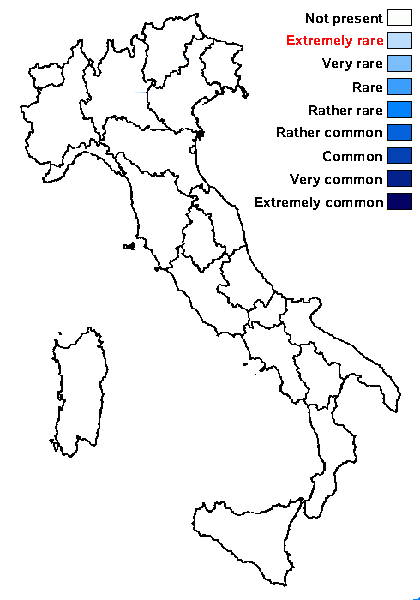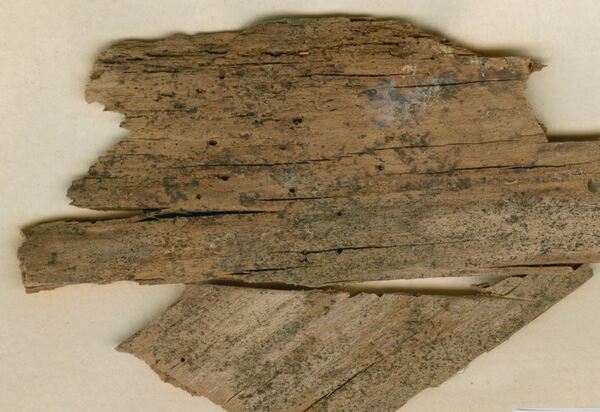Micarea anterior (Nyl.) Hedl.
Bih. K. Svenska Vetensk. Akad. Handl., 3, 18, 3: 76, 1892. Basionym: Lecidea anterior Nyl. - Flora, 58: 299, 1875
Synonyms:
Distribution:
Description: Thallus crustose, endosubstratic and inapparent or thinly episubstratic and then whitish, irregularly verrucose, up to 0.1 mm thick. Apothecia micareoid, pale reddish brown, orange-brown or red-brown, 0.15-0.35 mm across, sometimes confluent and forming up to 0.6 mm wide aggregates, adnate, with a convex, sometimes tuberculate disc, soon immarginate. Proper exciple thin, visible as a reddish brown zone, of radiating, branched and anastomosing, at first hyaline, then pigmented hyphae; epithecium scarcely differentiated from the hymenium; hymenium 38-50 μm high, colourless, the upper part patchily red-brown, K-; paraphyses simple or richly branched and anastomosing in upper part, 0.6-1 μm thick, the apical cells up to 1.5(-2) μm wide; hypothecium colourless, 60-110 μm high. Asci 8-spored, clavate to cylindrical-clavate; in K/I with a blue outer layer and apical dome and unstained wall, the dome with an apical cushion. Ascospores (0-)1(-2)-septate, hyaline, oblong-ovoid to fusiform, often slightly curved, (7-)9-14(-16) x 2.5-4.5 μm. Pycnidia usually numerous, of 2 types: a) stalked, 40-70 μm wide, the stalk (pycnidiophore) up to 0.25 mm tall, pale but brown-spotted, simple or branched and bearing 2-3 pycnidia which are short-cylindrical, with dark reddish brown walls, producing cylindrical, often centrally constricted and biguttulate mesoconidia measuring 3.5-4.5 x 1.2-1.6(-2) μm; b) sessile, 30-40 μm wide, with dark reddish brown walls, producing narrowly cylindrical microconidia measuring (3.2-)3.4-4.5 x 0.7-0.9 μm. Photobiont micareoid, the cells 4-7 μm wide. Spot tests: thallus and apothecia K-, C-, KC-, P-, UV-. Chemistry: without lichen substances.Note: on decorticated wood in coniferous forests, often together with species of Parmeliopsis; widespread in Europe but rather rare, with a single record from the Western Alps (Switzerland); to be looked for in the Italian Alps.
Growth form: Crustose
Substrata: lignum
Photobiont: green algae other than Trentepohlia
Reproductive strategy: mainly sexual

Predictive model
Growth form: Crustose
Substrata: lignum
Photobiont: green algae other than Trentepohlia
Reproductive strategy: mainly sexual

Predictive model
 INDEX FUNGORUM
INDEX FUNGORUM
 GBIF
GBIF


